What Is It And What’s It Worth? Chihuly Glass Art
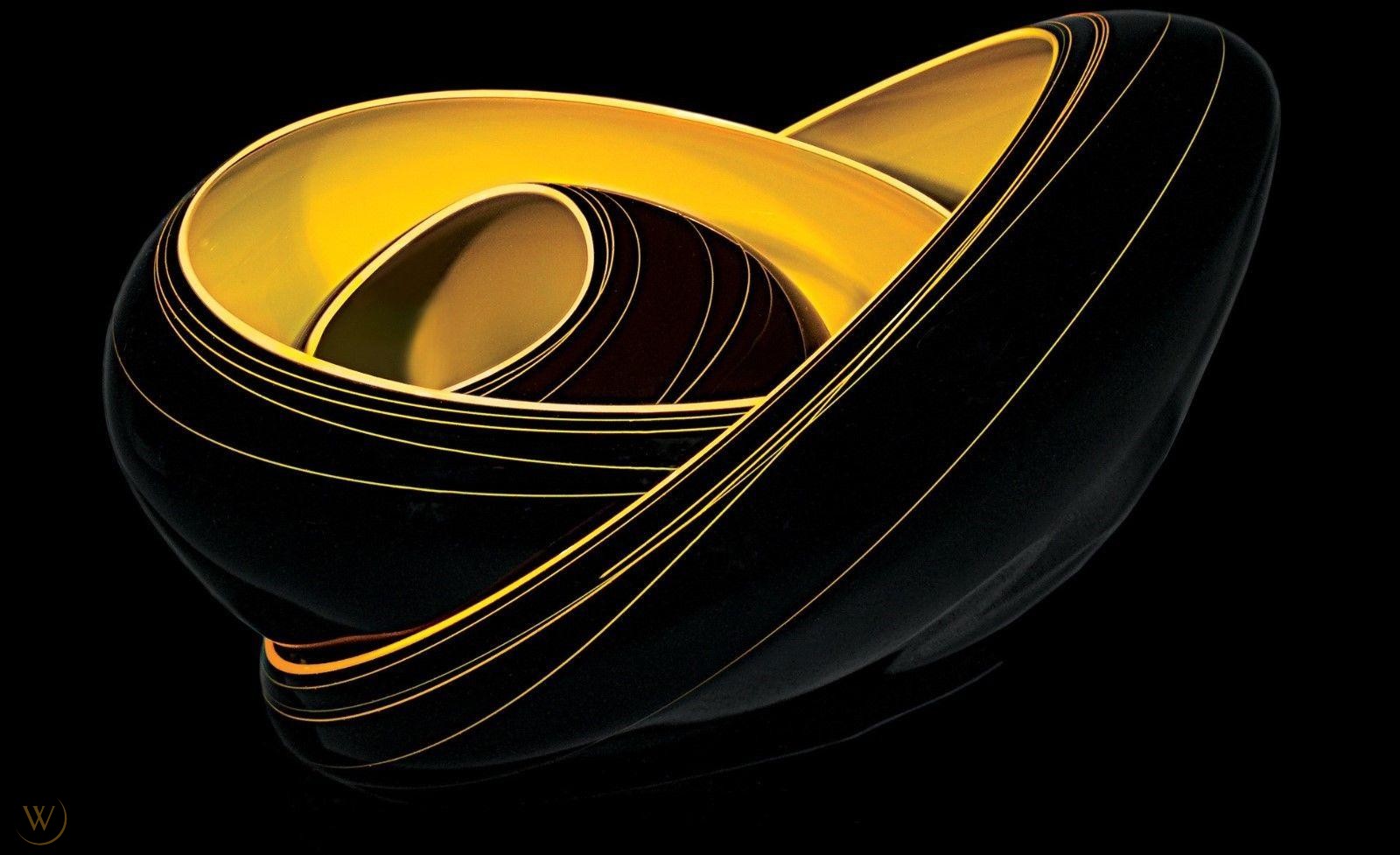
It’s unlikely that you’ll accidentally stumble across a work by Chihuly (an artist who, like Cher or Prince, certainly has a whole name but is best known by a single moniker), but you’ll know you’ve found one because there’s nothing else like it.
Dale Patrick Chihuly was born in Tacoma, Washington, in 1941 and studied interior design at the University of Washington. He transferred there after studying at the College of Puget Sound, which he attended after his mother persuaded him to; if not for her urging, the world might not have his works to enjoy.
He dropped out of the university for a bit in order to travel to Florence and study art. Travel renewed his interest in his studies; he came back home and won an award after weaving a tapestry that included shards of glass—a hint of things to come.
In 1965 he took up glassblowing. He went on a full scholarship to study it further in 1966 at the University of Wisconsin-Madison, in America’s first glass program under the aegis of Harvey Littleton. He graduated with a degree in sculpture and attended the Rhode Island School of Design, becoming friends with artist Italo Scanga.
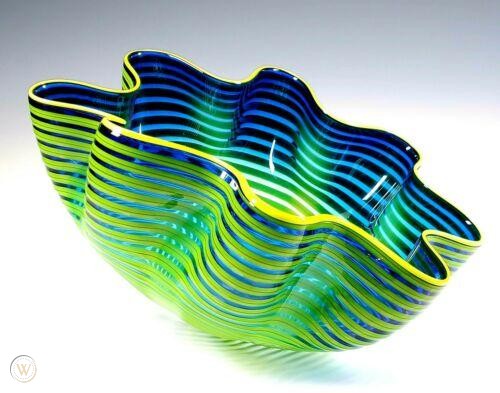
Chihuly traveled to Venice on a Fulbright Scholarship in 1968 to work in the famed Murano glass factories, came back to the U.S., and went to Europe again, meeting the German Erwin Eisch, considered one of the founders of studio glass art; and Jaroslava Bychtovi and Stanislaw Libensky, a married Czech couple who were each powerful glass artists in their own right.
He went on to form the Pilchuck Glass School in his home state in 1971, along with the Hilltop Artists program at two Tacoma high schools.
It’s in the 1970s, after Pilchuk’s founding, that we find Chihuly encountering two great blows to not merely his career but to his own body. In 1976, his left eye was destroyed in a car accident while he was visiting England; and in 1976, he suffered a shoulder injury while bodysurfing. The shoulder injury ensured he would be unable to act as a gaffer (holding the blowpipe that is dipped into liquid glass and blown into) again.
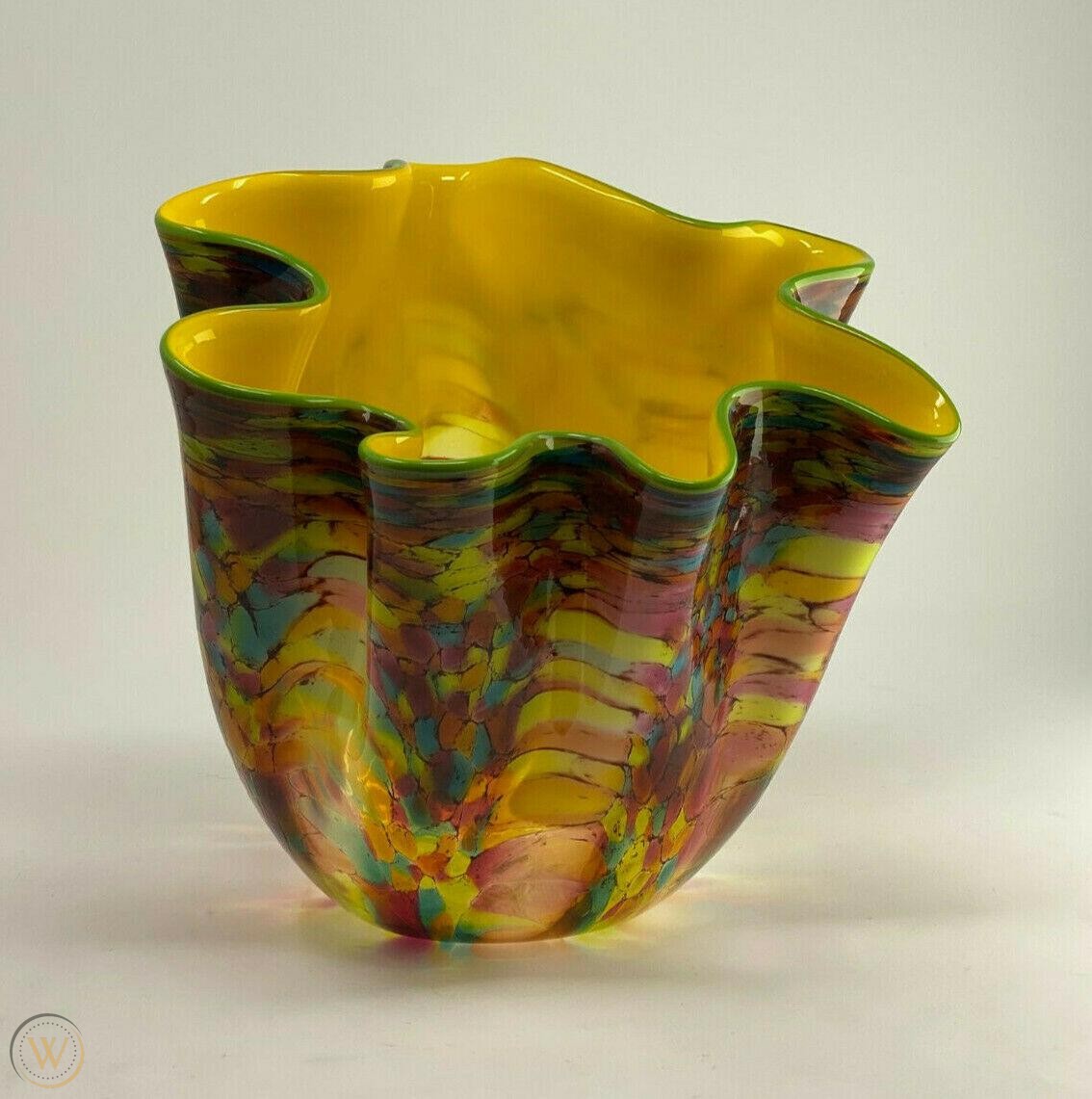
This might have stopped him, but he decided to continue his work by employing a series of assistants and directing the design and creation of his art rather than tactilely producing it himself. This has led to a perennial questioning of how much Chihuly’s art is really “his,” a topic the media delves into from time to time, though his fans, of which there are legions, don’t seem too worried about it.
When we think about obtaining the work of a great artist, we tend to imagine the very wealthy buying originals so far removed from our consciousness that we never expect to see them. Or, we think of buying Van Gogh mousepads or Magritte posters or Picasso-print T-shirts—reproductions of great works in new mediums that even if their initial creators would dislike, they’re too dead to object.
However, Chihuly’s studio produces works for sale at what are, considering their provenance, reasonable prices. An authentic Seaform or Macchia can be had for about the cost of a used car. It’ll be a reproduction of an earlier work or a change rung on a known line of Chihuly’s sculpture, but authentic and gettable.
(And, if you’re less in funds or on the prowl for a basic gift, you can indeed buy a Chihuly puzzle or bag or book, because why wait to die for your works to appear on tchotchkes when you could do it yourself and make money? Are other artists doing this, and if not, are they jealous?)
Whether you’re in the market for a book about his art or one of his actual works, you’ll have to admit how captivating they are to look at and how unique they are.
Starting in 1975, Chihuly produced glass cylinders based on Navajo blanket designs; and, in 1977, carried on the American Indian theme with glass baskets based on Northwest coast tribal baskets. He described the originals’ “slumped, sagging forms” and wanted to recreate the same feeling in the hard but fragile medium of glass. In many respects, this is seen as groundbreaking—tossing aside symmetry and letting the play of heat and gravity have its way.
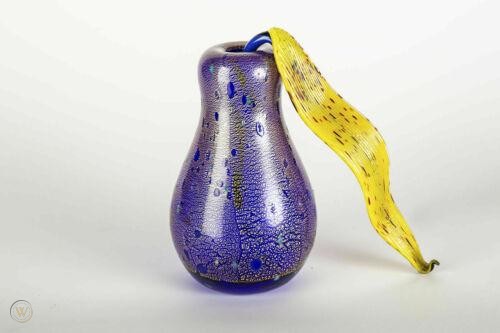
In 1980 he started a series that is one of his most well-known artistic enterprises and possibly the most popular: the Seaforms. They came about when he noticed that glass in its hottest state sometimes has a resemblance to things from the sea. The series–which has a lot of visual overlap with the later Macchia (1981) and Persian (1986) series—evokes the aquatic in ways that are broad and open to interpretation and yet somehow also highly specific. Some are delicately translucent, like a jellyfish or a thin sheet of kelp; others are almost poisonously vibrant as the spine of a lionfish or a sea urchin’s barb. The larger pieces look like the offspring of a giant clam and a punchbowl, something a chic mermaid would set out as a serving vessel for a watery buffet.
The Macchias that followed on the heels of the Seaforms all have that same undersea aesthetic, though opaque, and more round and deep–they also look a bit like fantastical, enormous shumai (a type of Chinese dumpling) emptied of their filling, or very rare flowers.
The Persians, equally brilliant, “started as a search for form,” according to Chihuly’s official website, and are meant to make the viewer think of the East and or Venice. Still, they seem quite clearly direct descendants of the original Seaforms and the Macchias, with some DNA from his earlier baskets.
The brilliance of these three series of pieces, in particular, is that they offer enough form to be recognizable in some way but devoid of meaning so that the viewer can impart all manner of associations to them—though the same can be said of most of Chihuly’s works.
These were followed by the Venetian series in 1988 and 1990, which could be described as everyday objects like flower vases and cocktails, but created for elementals and wizards; and the Ikebana series, which look a bit like extraterrestrial plants, in 1989, among others.
The would-be collector should go into seeking Chihuly’s work with full knowledge that anything for sale in a public forum was probably made for, and sold on, the commercial page of his website—and not, no matter how handsome the price or fervent the seller’s assurances, anything that once resided in a museum case. (An exception might be anything sold publicly from a private collection.)
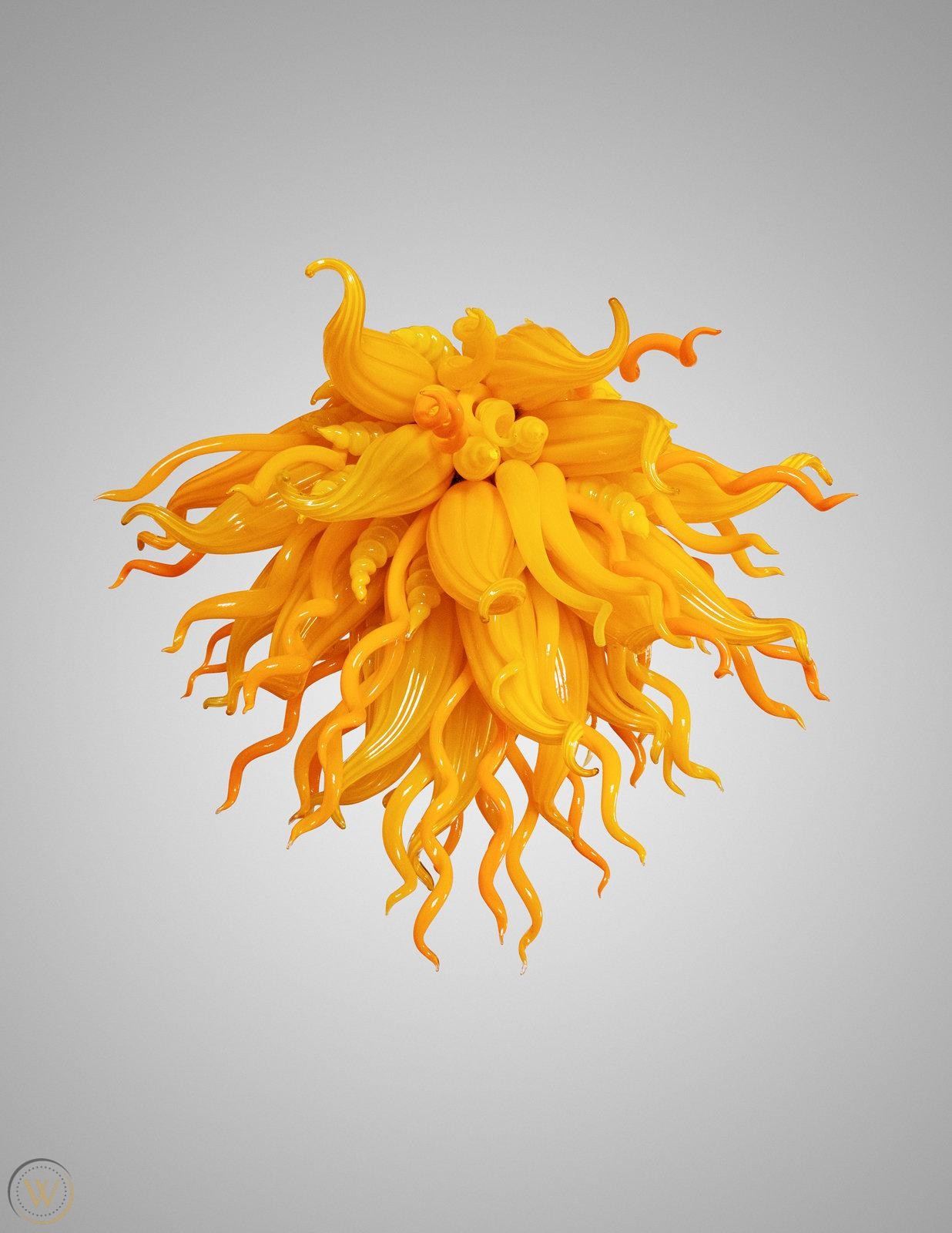
Pieces are never seen for less than four figures. If you should catch the stray large piece, like a chandelier, anywhere from five to six figures is to be expected. Cylinder reproductions aren’t coming from the studio, so pieces can go for $13,000-$18,000 and are hard to find for less than five figures. Comparatively affordable are studio basket reproductions; a 2015 replica from the early baskets series went for $7,000 in 2017, which is on the higher end but not atypical (other baskets go for $3,600 or close).
The more aquatic pieces, being popular as well, see plenty of studio versions and reproductions and are therefore usually found in the four-figure range. A “Neptune glass” Seaform went for $5,500 in the spring of 2021. Others from this line go for $7,000 down to said $5,000 or so. Macchia are slightly towards the higher end of the scale, going in the $7,000-$9,000 range.
Venetian pieces are placed in the upper four-figure to lower five-figure range; interestingly, a blue vase-like form went for $16,640 in January 2020, and yet a more complex Venetian went for a relatively mere $9,375 only two months prior in November 2019. Ikebanas run about the same, from $7,000 to about double that.
The Chihuly enthusiast who doesn’t want to settle for lesser merchandise (at least consider a book, though? All the pleasure of looking at glass art without the burden of keeping it safe) had best come armed with a very full wallet. But, failing that, perhaps it’s best to do what many settle for: simply look up the list of current and permanent Chihuly exhibits and start booking travel tickets.
Note: If you want to learn more about Chihuly and his work, read our article by Megan Shepherd.
Shannon Watkins is a journalist and writer from Virginia who enjoys baking cookies, reading, watching TV shows and movies, and shameless loafing about.
WorthPoint—Discover. Value. Preserve.
The post What Is It And What’s It Worth? Chihuly Glass Art appeared first on WorthPoint.
